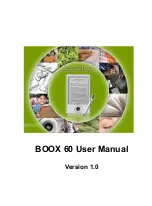
Qscan User’s Guide Version 1.4
Page
Notes on using the Barcode Masking Commands:
If (“
ctt
”) matches the type of barcode read, and the length of the barcode matches
(“
llnn
”
) then the barcode is masked according to the programmed parameters. If the
length (“
llnn
”
) is set to 0000, then the mask will apply to all barcodes of the specific
symbology specified by (“
ctt
”
).
If any of the parameters causes the mask to be invalid, the barcode is not processed
and the reader acts as if it has read a disallowed barcode (bad beep indicator). For
example, attempting to extract 10 digits starting at position 5, on a barcode that is
only 12 digits in length, is invalid.
The pasthru option allows you to specify what to do when a barcode that is read
matches the selected barcode symbology (“
ctt
”) but does not match the required
length (“
llnn
”). In this case, you have the option of disallowing the barcode (option 0),
or passing the barcode through so that the other masks may be tested.
An example would be where you want to restrict barcode reading to two different
lengths of code 39 barcodes, namely 10 digits and 15 digits. You will set up the first
mask to operate on a length of 10, with the passthru option on (“
r=1
”). Code 39
barcodes with a length other than 10 will not be processed by this mask, put passed
through to the next (2nd) mask. Set the 2nd mask to operate on code 39 barcodes
with a length of 15, with no passthru (“
r=0
”). In this case, 10 digit code 39 barcodes
are handled by mask 1, 15 digit code 39 barcodes are handled by mask 2, and all other
code 39 barcodes are ignored by the reader.
The start positions (“
sss1,sss2
”) are the positions in the barcode where the data
extraction starts. This position can be relative to the beginning of the barcode
(
b=0 or y=0
), or the end of the barcode (“
b=1 or y=1
”). If you want to take the last
“x” characters in the barcode, set the backwards indicator (“
b or y
”) to a 1.
The wiegand processing routines contain their own form of masking.
If processing a barcode for wiegand output, the programmable
masking within the weigand commands may be sufficient. Using
the general masking commands may not be necessary for simplified
masking (see page 48).
Masking Examples:
For code 39 barcodes of any length , take the first 5 positions only:
X010 01 001 0000 0
X011 01 000 0001 0 005
X012 01 000 0000 0 000 000
PROGRAMMING
i
BARCODE MA
SKING















































